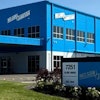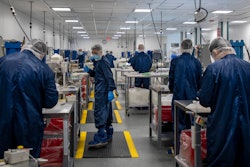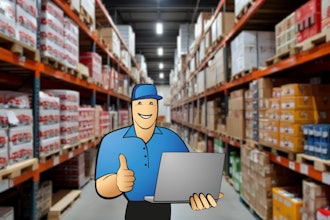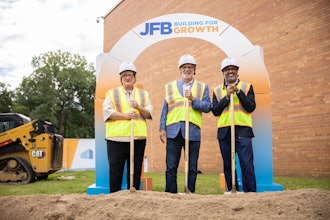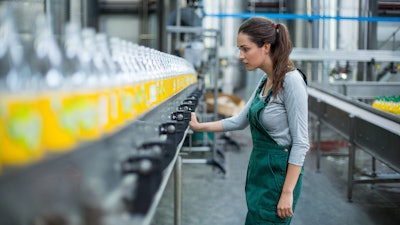
There are few consumer goods providers that have a tighter connection with their customers than food and beverage companies. Entire cultures are defined by what they drink and eat. People find comfort in their favorite foods and form lifelong bonds with brands that simply cannot be broken. Just look at the strongly worded letters manufacturers receive from customers asking them to return to original recipes when the packaging was the only change made in decades.
Though brand history and consistency have proven time and again to be keys to success for food and beverage manufacturers, ironically, these same things have created a reluctance to innovation – which is desperately needed if the industry wants to continue satisfying customers’ cravings.
Transparency Demands Technology
Consumers are demanding more details about what’s in each product, and they care about the production, packaging, distribution, and storage processes. But society has entered the age of information, and that’s driving food and beverage supply chains into an era of transformation and reinvention. Tight margins and tightening labor markets are also accelerating timelines, leaving many unsure of how to quickly adapt without further disrupting operations.
As Franklin D. Roosevelt once said, “There are many ways of going forward, but only one way of standing still.”
For example, there are many technologies aiding workers through the current tough times, including mobile computers, barcode scanners, and even new heads-up displays that support augmented reality applications. However, there is one set of technologies that will play a major role in the food and beverage industry’s ability to excel in the coming months and decades: the one that enables automation of both mechanical processes and historically manual workflows across each part of the supply chain.
I realize automation is not new in this space. Food and beverage manufacturers have automated production processes for a long time. But those who want to keep up with future demand and ahead of challenges must start to extend operational information beyond traditional silos and allow both supply chain partners and customers to peer into the inner workings of their businesses.
First up will be incremental advances in production automation to start giving decision makers more data to work with when trying to speed up or slow down operations, or improve planning and execution downstream.
However, the real return will come when manufacturers automate the finished goods storage, movement, and staging processes, as it will suddenly become easier to pivot to last minute changes in production and distribution, even when labor resources are limited. Automation is the key to doing more with less.
Automation Drives Progress
As with most technologies, automation solutions can come in many forms and can be applied in many ways to steer operational improvements:
- Semi automation will resemble existing operations closely, just introducing minor automation components such as product movers and stackers to help the workforce be more efficient.
- On the flipside, full automation setups – sometimes referred to as dark warehouses – are seemingly self-sufficient. They are quite a sight to take in: an orchestra of elevators, conveyors and robotic arms working in tandem to move finished goods from the end of the production line to racks that rotate to the loading docks, all with minimal worker intervention.
Food and beverage manufacturers are ripe for full automation. They have minimal SKU counts to track and high inventory turnover rates. Plus, less infrastructure is needed to introduce automation when standard totes are used to carry products and storage footprints are minimal. With many of the industry’s facilities approaching their final decades, full automation storage systems should be included when designing next-generation facilities.
Now, food and beverage distributors are in a much different place, as they are essentially third-party logistics groups that tend to have higher SKU counts, dynamic SKU lists, and SKUs coming in various sizes, as compared to food and beverage producers. They also have larger warehouse/distribution center (DC) footprints and are more likely to move facilities as their markets and business needs change. Therefore, semi-automation solutions would be a better fit, as they’ll help workers immediately become more efficient in storage, picking and loading operations.
The Recipe for Success
Though some in the food and beverage industry are not yet implementing automation, all parties should be assessing operations and determining the best first – or next – move.
Manufacturers should keep adding automation to production lines as needed and focus on full automation for storage and staging operations. Semi-automation can be utilized in special cases, but primarily in a short-term, band-aid manner. Ideally, resources should be allocated to full automation storage systems.
Distributors, on the other hand, should focus first on semi-automation components that eliminate workers’ remedial tasks, such as moving finished goods. Give them bandwidth to focus more on rotation, staging and loading, where applicable.
Keep an eye on full automation, though.
Semi-automation may be the more realistic solution right now given how difficult it would be to implement full automation in current distribution settings. But the time will come for distributors to transition to dark warehouse-type environments too – once greater supply chain stability is achieved.
Those who start to automate operations today will be better positioned to satiate consumers’ appetites for well-stocked grocery and pantry shelves in the future. It will also help to ensure food and beverage brands – and manufacturers’ legacies – remain strong as customer bases grow and your product values increase.
Learn more about automation in the food and beverage industry here.
Paul Hilton is the Food & Beverage Industry Lead, responsible for ensuring that Zebra Technologies is aligned to the needs and challenges facing groups producing and distributing perishable goods.



